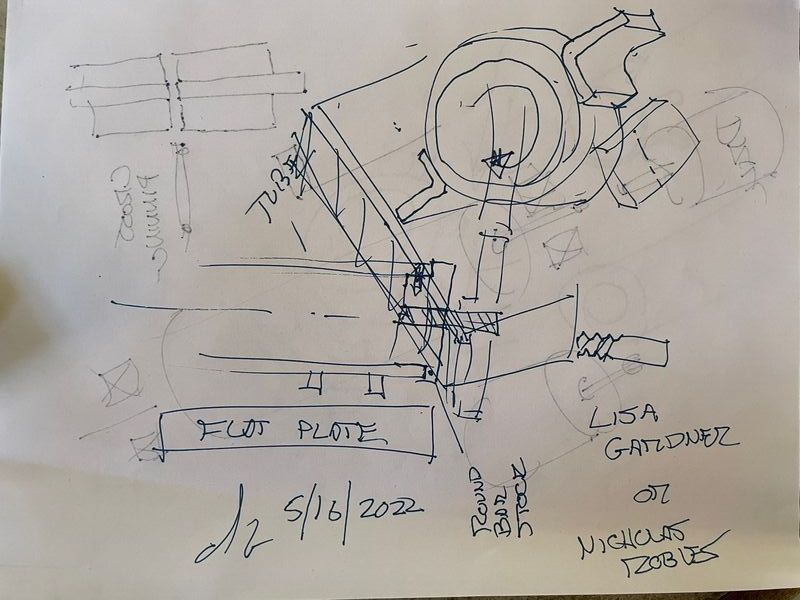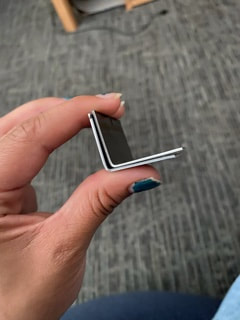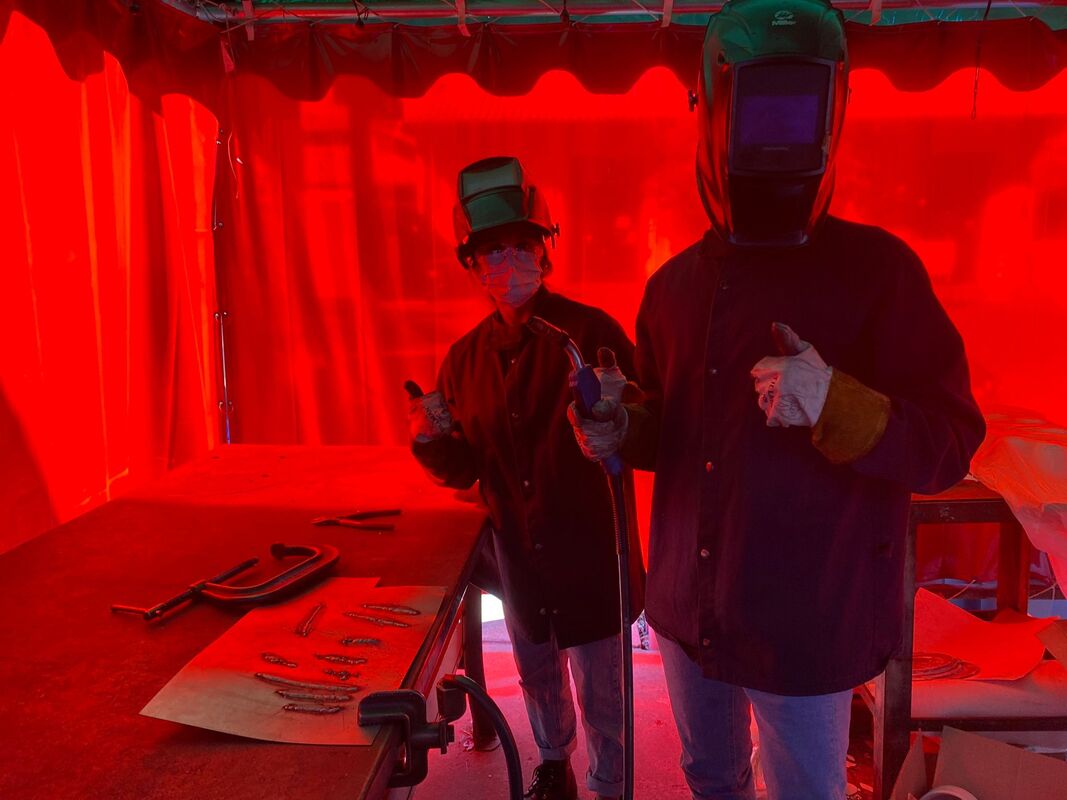|
Hello everyone! Our team had COVID-related issues for the last two weeks and we finally had the chance to meet all together in person on Tuesday. Some other updates for the week:
We also discussed our issue getting hammer blades and managing their weight with a scaled down prototype. He suggested we can try custom making L-shaped sheet metal since it's a rough approximation and use it for preliminary testing. We have already made our custom 'blades' and we are going to weld it onto the rod on Thursday so we can do preliminary tests until the hammer blades arrive. We measured the angle of the hammer blades at the bend and bent the metal to be this exact angle (85 degrees). We also used the relative size of the blades to the axle and maintained that ratio constant in order to make it a closer approximation. Alawab will also run some other calculations on how close the approximation is using parameters like its mass, momentum during a rotation and we will film it and compare it visually to how hammer blades rotate.
Isabella has been running some tests on our previous prototypes. She is currently measuring the horizontal and vertical area it covers, to ensure a blade can cover the sufficient height and width of a cotton stalk. She is also measuring the rpm of the axle itself based on variable drill speeds, so if the drill we are using turns out to be too fast/too slow we can quantitatively approximate what speed is ideal. We also found some industrial specifications for flail mowers (very similar to what we've been building) here: http://ncsheriffs.org/Heavy%20Equipment%20Bid%2019-03-0504/Equipment%20to%20Add/Quality%20Equipment/Lot%2032/Copy%20of%20RF90ED%20%28Rear%20Flail%29030714.pdf. We will be comparing out prototype and which of these specifications it meets and doesn't meet. Next week, we'll likely present some experimental data we've gathered over the past weeks and start prepping for the presentation. See you next week! ~Boomitra Team
0 Comments
Moving forward with the the final design, this week our team was primarily focused on building skills and concluding the materials that would work best for the purposes of the final prototype.
Due to the fact that the final design will incorporate real hammer blades that are much heavier than the 3D-printed hammer blades that were used in the mid-quarter prototype, our team has prioritized finding an axle (functioning as cutter shaft) that will able to withstand the weight and force of the final design blades. In discussing the options for getting the necessary axle, we found that the most economical and sensible decision would be to weld a portion of the axle ourselves. Most of the team was not experienced for the type of welding necessary to make the axle, therefore two of our team members are learning to weld through the PRL (product realization lab). Besides learning to weld, our team has prioritized laying out the goals and tests the will allow us to measure up to the user and technical requirements for the project. Our main goals to demonstrate in the midst of producing the final design will be: 1. Determining Blade Movement 2. Determining the Cutting Potential of the Shredder with Accessible Materials 3. Determining the Cutting Potential of the Shredder with Higher Power and Real Hammer Blades. The test that we will run that will assist in reaching these goals involve using a stop motion camera to better visualize the blade movement and attempting to cut different materials with the shredder at different power levels. In the near future, our team also plans on visiting Alan steel to take a closer look at pieces that will be used in the final design. Our team is also looking forward to talking over our project with a faculty member with more experience in the manufacturing industry (specifically for mechanized tools) and mechanical engineering. We are excited to have started prototyping our final (for this quarter) design! Our team has been learning how to weld and are going to spend the next week figuring out how to do the following through welding:
Jierui unfortunately has COVID, so she'll be taking a lighter load this week. Jierui will be working on researching available materials and their costs from the list above so that they will be readily available when we put the shredder together. Isabella will be working on a testing plan for the shredders specifications for the remainder of the quarter. We have some rough experiment ideas to measure different aspects. We have thought of experiments to measure momentum required to knock over the stalk so that we can identify the right motor with the right rpm that will generate this momentum. We will also be testing whether the blades hit at the right angle and the depth at which the blades hit the stalk to understand the effectiveness of the shredder design. Here is the link the to testing plan: click here. This doc will be constantly evolving as we update some of our ideas. We would love to hear your thoughts on these tests and if you can think of better experiments to measure these parameters (feel free to leave comments on the doc!). We would also love any welding experts to help us out with learning and determining which type of welding is suitable for different aspects of the design. ~Boomitra team |
AuthorWrite something about yourself. No need to be fancy, just an overview. ArchivesCategories |




 RSS Feed
RSS Feed
